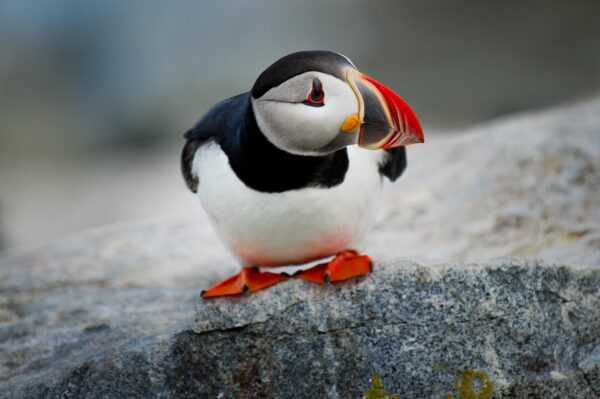A new census covering over 10,000 sites reveals 11 of 25 seabird species that breed in Britain, Ireland, Isle of Man and the Channel Isles have declined over the past 20 years.
Britain and Ireland hold most of the world’s nesting Manx shearwaters, northern gannets and great skuas. The islands are also a vital stronghold for other species of seabird, such as lesser black-backed gulls, common guillemots, European storm-petrels and roseate terns.
(Photo by Ray Hennessy)
Two thirds of Scots seabird species have declined in last 20 years
The Seabirds Count survey is the most comprehensive study of its kind and found numbers of 14 of the 23 seabird types which regularly breed in Scotland have fallen since 2000. Home to 23 of the 25 seabird species which breed in Britain and Ireland, and 51% of the total population, Scotland is incredibly important both globally and at a European level for seabirds.
Atlantic Puffins have declined by 21 per cent in Scotland, reflecting a wider loss in the UK, as Scotland is home to 75 per cent of the species. Globally, Atlantic Puffins are considered to be vulnerable to extinction.
Anne McCall of RSPB Scotland said: “The huge scale of seabird declines in Scotland shows these impacts starkly and it is clear there is an urgent need for effective actions that will help reverse the fortunes of seabirds.”
JNCC’s senior marine ornithologist and Seabirds Count coordinator, Daisy Burnell said: “The majority of Britain and Ireland’s seabirds breed in Scotland, and unfortunately for many of them the results of Seabirds Count do not paint a positive picture.
What’s causing the fall in the number of some seabird species?
Although the main reasons for falling populations vary between species and locations, there are some common themes which have led to the fall in some seabirds’ numbers.
Predators are a key factor as eggs, chicks and adults can be eaten by other species which either live in the regions, or have come from elsewhere.
Climate change has also had a big impact on some birds. Poor weather conditions are causing nest sites to be swept away and making it more difficult for the birds to search for food and other things they need.
Increased water temperatures have reduced the availability of key food sources like certain types of fish which leads to seabird parents not finding enough food for themselves and their offspring.
The lack of food is also affected by commercial fishing, which involves companies catching fish which they then sell on. This can be a particularly big problem during the important breeding season.
Sentinels of health
Seabirds were doing best around the Republic of Ireland coastline, with 15 species increasing and only two declining.
“Seabirds are sentinels for the health of marine ecosystems, highlighting action that needs to be taken to recover the marine environment,” said Gemma Harper, the chief executive of JNCC. “Loss of biodiversity is weakening the ability of the marine environment to withstand disturbance, adapt to and mitigate the impacts of climate change, and is affecting the ability of our seas to supply critical services for society.”
The Seabirds Count, the fourth census of Britain and Ireland’s internationally important populations of breeding seabirds, were published on 16 November 2023 and further information from JNCC can be found here.
